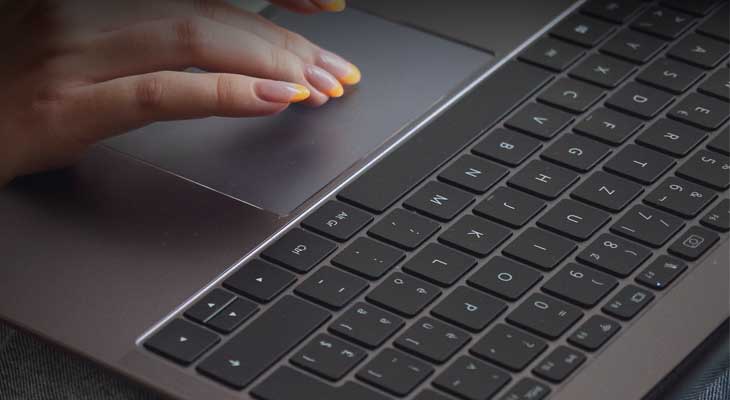A touchpad may not offer accuracy and control like a mouse but it’s an essential part of a laptop or notebook computer. It’s compact and attached to the PC and unlike a mouse, doesn’t require a flat surface to operate.
So, when the touchpad on your laptop stops working, it can make your computer almost unusable, especially when you don’t have a desktop mouse lying around. Touchpads have a pretty low failure rate compared to other computer hardware but they can sometimes become unresponsive or behave erratically.
There can be numerous reasons for an erratic or a completely unresponsive touchpad. Some of the methods explained below would help you to diagnose the problem and correct it, if it’s not due to a physical hardware failure.
RELATED: Fixing Unresponsive or Frozen Touchpad in Windows 11
Stuck Touchpad due to Unresponsive PC
A computer may become slow or stop responding due to a busy CPU, not enough RAM or an unresponsive program or app. This means, your touchpad is working but the computer needs some time to come out of this system freeze.
Wait for a couple of minutes and your computer would automatically return to its normal state.
You can also try pressing the Ctrl + Alt + Del key combination to open the task manager and kill any rogue process.
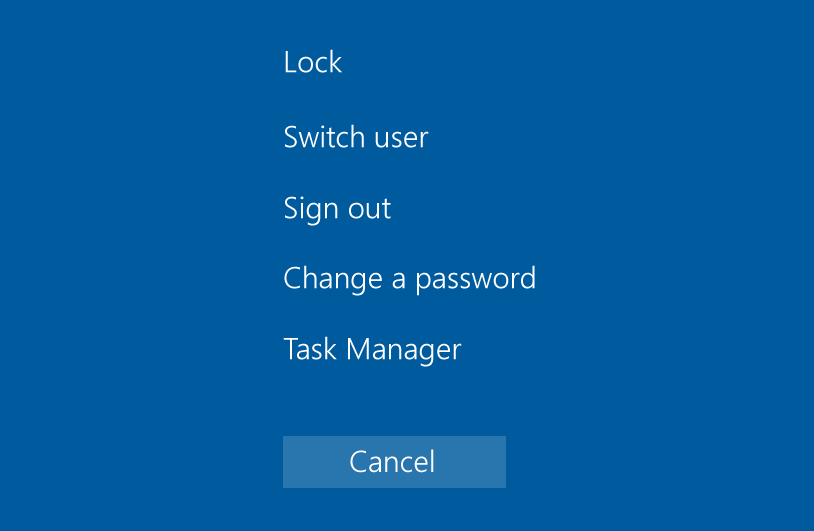
If your computer fails to respond, then it’s your PC, not the touchpad which is stuck. Hard rebooting your PC by pressing the power button for 5 seconds is one possible solution to this problem.
Try Pressing Touchpad Enable/Disable Key
Some PC’s have buttons in the keyboard and the touchpad to enable/disable it. In some laptop models, one of the function-keys (F7) acts as the dual use key to enable or disable the touchpad.
This means, you can sometimes, accidentally disable the touchpad while pressing some keyboard shortcut combination. Try pressing Fn + F7 keys together to see if it enables the touchpad. The keys to enable/disable the touchpad may be different on some laptop models depending on the manufacturer.
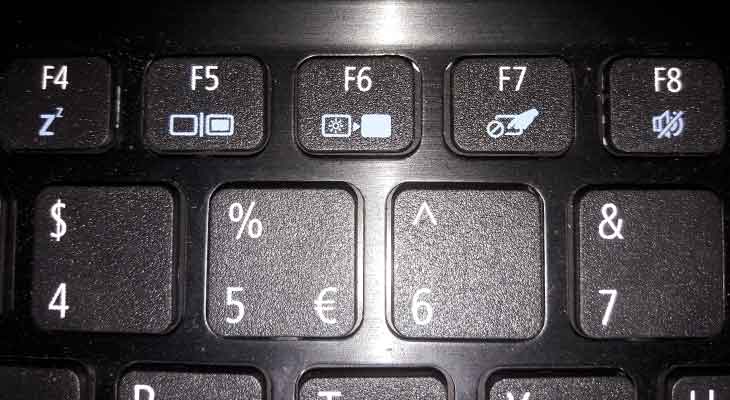
HP, Acer and Lenovo laptops may have buttons within the touchpad for enabling or disabling it. In some of them, there is also an indicator light showing the status of your touchpad.
Try pressing or tapping on the button or the indicator light, to see if it changes the status of the indicator light or enables the touchpad.
Disconnect External Mouse or Touchpad
Sometimes, connecting an external mouse or touchpad can cause issues and may disable your touchpad. Moreover, there is a Windows 10 setting to keep your touchpad working when you connect an external mouse. Make sure that this setting is enabled and reconnect any external mouse or trackpad device.
To check the status of this setting, press the Windows + R shortcut and type the following command in the Run dialog and hit Enter. It will open the Touchpad settings page in the Settings app.
ms-settings:devices-touchpad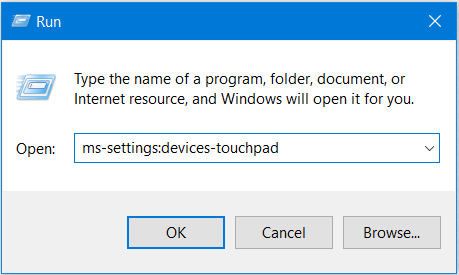
In Touchpad Settings, Check whether the touchpad is toggled On and the checkbox labeled “Leave touchpad on when a mouse is connected” is ticked or checked.
NOTE: The Touchpad Settings may be different for Windows 11 users. You can use this tutorial for changing the Touchpad settings in Windows 11 computers.
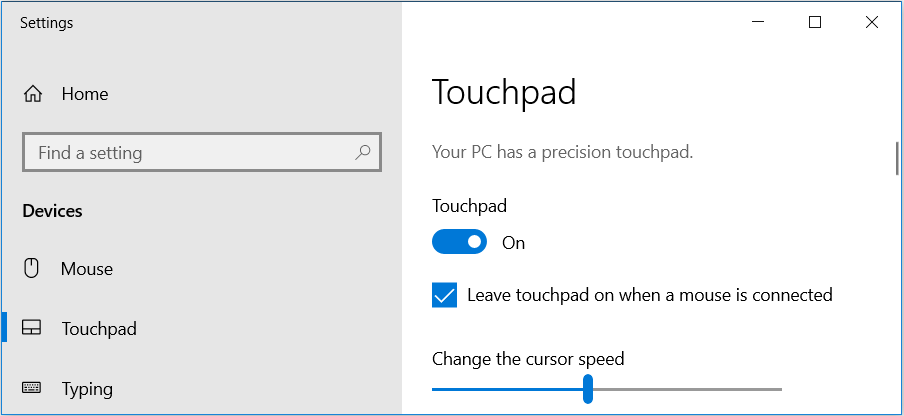
Update or Roll Back Drivers
A system update, missing or out of date drivers can also cause issues with your touchpad. Try updating or uninstalling the device driver to see if it fixes the issue.
You can update your touchpad device driver using the Device manager. Press the Windows + X shortcut and select Device Manager in the contextual menu.
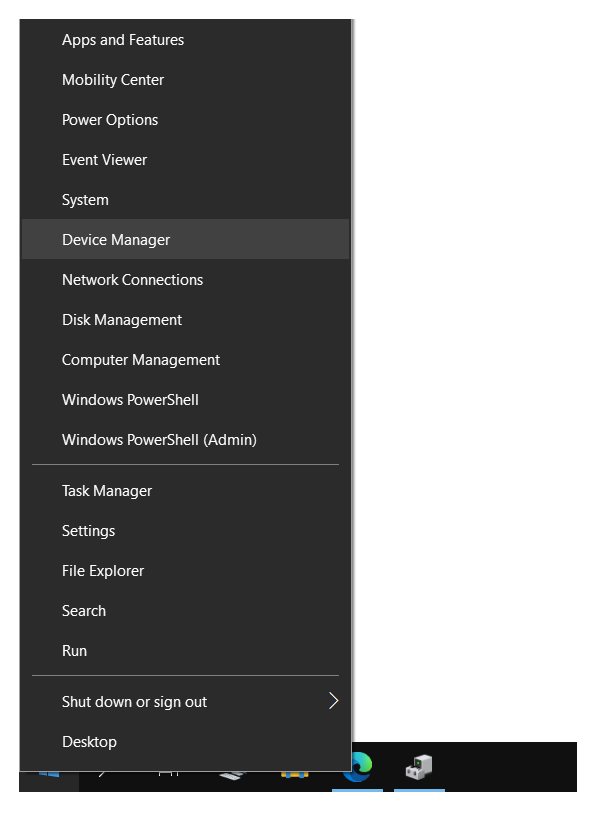
Expand ‘Mice and other pointing devices‘ to find the touchpad drivers. In some computers, Device Manager lists the touchpad under ‘Human Interface Devices’
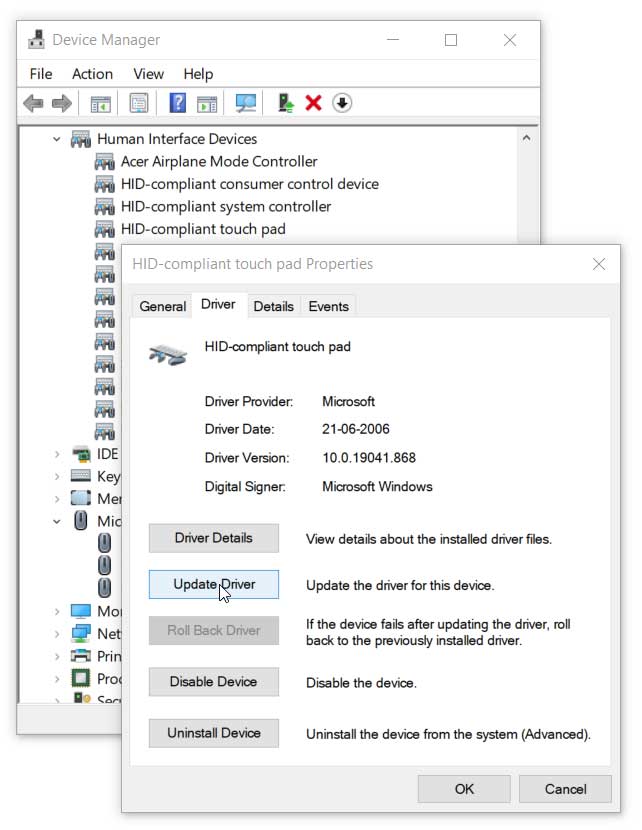
Right Click on the Touchpad option and then select the Driver tab and click on Update Driver.
If updating the driver didn’t work, try uninstalling the device from the System by clicking on Uninstall Device. Restart your computer and let Windows reinstall the device driver.
Change Touchpad Sensitivity or Reset Touchpad
Touchpad sensitivity can also be a reason for an erratic touchpad. Touchpad surfaces may get eroded over time if you apply too much pressure while using them.
Moreover, a layer of oil or dirt buildup on the touchpad can also cause this problem. Try cleaning it with a moist cloth or isopropyl alcohol. Also, try changing the sensitivity to low or high to see whether it makes any difference.
To change the sensitivity, press Windows + R key combination, to open the Run dialog and type the following command to open the touchpad settings.
ms-settings:devices-touchpad
Click on the dropdown below “Touchpad Sensitivity” to change the sensitivity setting.
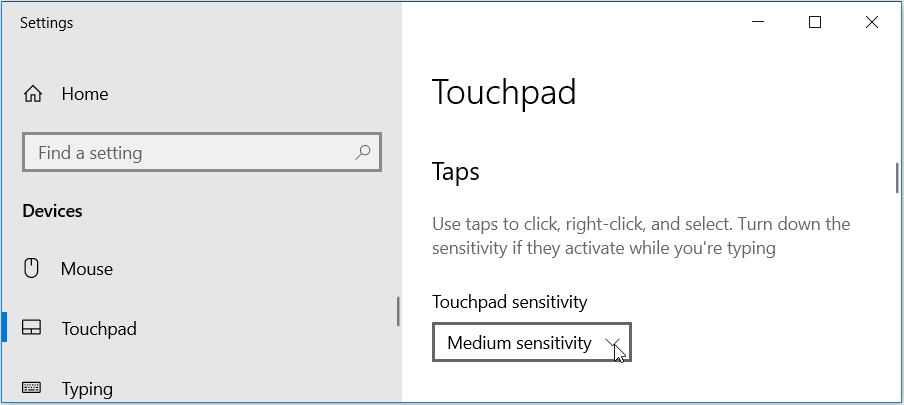
NOTE: The Touchpad Settings may be different for Windows 11 users. You can use this tutorial for changing the Touchpad settings in Windows 11 computers.
You can also Reset your Touchpad to default settings by pressing the Reset button at the bottom of the Touchpad settings page.
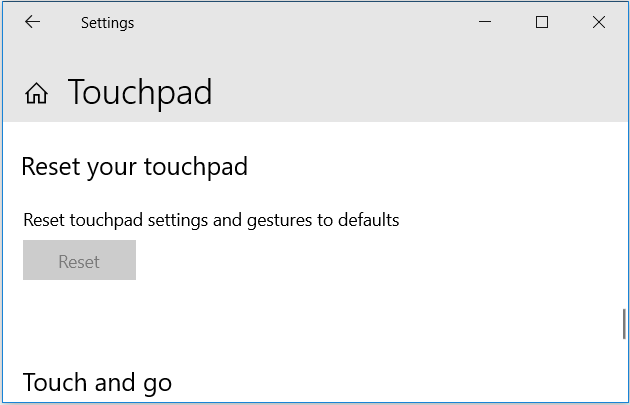
Enable Touchpad in BIOS
Some PC’s have settings in the BIOS or UEFI for enabling or disabling the hardware components of the computer. If your Touchpad is disabled in the BIOS then you may have to enter your BIOS settings during the system boot and enable it.
The BIOS can be accessed by pressing F2 key when your system starts booting. The key to access the BIOS may be different depending on the manufacturer of your PC.
RELATED: How to move the Mouse Pointer using Keyboard in Windows 10
Hardware Failure
If none of the above methods work then it’s probably a hardware failure or a loose connector on the motherboard. In most laptop PC’s the touchpad is connected to the motherboard with ZIF plastic cables, with a small plastic flip lever.
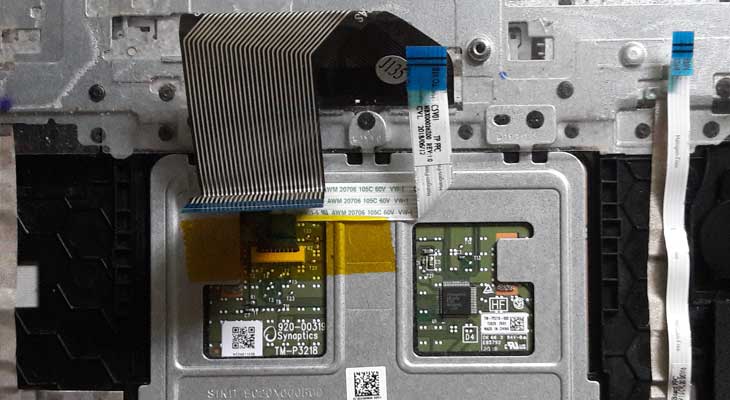
If the cable is not inserted properly or damaged then your touchpad would behave erratic or go unresponsive. Do not try to fix it yourself if you are not comfortable opening up your laptop.
If it’s a hardware problem, try contacting your PC manufacturer or a service center to get it repaired. You can use a desktop mouse or an external touchpad if you need to use the PC.
If you don’t have an external mouse then you can try switching on Mouse Keys if you have a laptop with a numeric keypad.
You can also enable the on screen touchpad if you have a touch capable PC. Press and hold (or right-click) the taskbar, and then select Show touchpad button. Click on the touchpad button in the taskbar to open the onscreen touchpad.
How to Access your Phone’s WhatsApp from a Desktop Browser
How to Join Videos using The Photos app in Windows 10
How to UnSend a Sent Email in Gmail and Outlook
How to use the Start Menu’s Inbuilt Image Search in Windows 10
